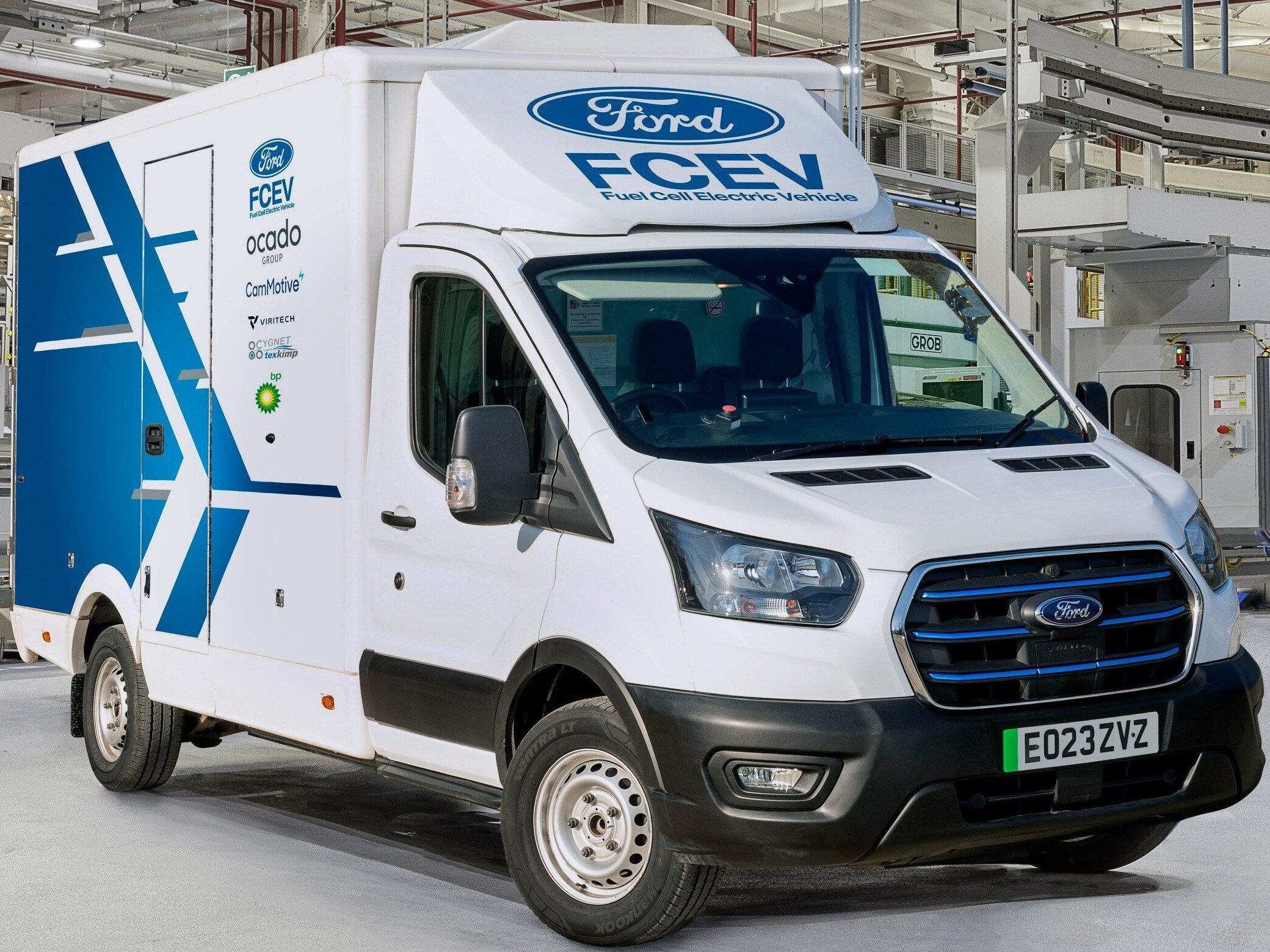E‑Transit powered by hydrogen cells. The tests will last three years

Ford is conducting research into the potential of hydrogen as a source of energy for cells. Three-year tests will be carried out on board the Ford E-Transit delivery van.
Hydrogen fuel cells generate electricity by synthesizing the hydrogen in the car’s tank with oxygen.
Will it match the range of the Transit with diesel?
A short-run test fleet of eight fuel cell-powered Ford E-Transits will be operated in six-month phases over a three-year project until 2025. Data from the test fleet will provide information on the total cost of ownership and operation of a large commercial vehicle with an extended range and operating hours that, without the need to recharge during shifts, rivals its diesel counterpart.
Will hydrogen-powered E-Transit be profitable?
The prototype Ford E-Transity will feature high-power fuel cell suites and high-capacity hydrogen tanks that are improved in terms of safety, capacity, cost and weight. An important element of the project will be the assessment of the effective and cost-effective recycling of end-of-life components.
Implementation of Ford’s “Road to Better” plan
Ford has been researching fuel cell technology since the 1990s, developing many prototypes. In 2021, during the CENEX Low-Emission Vehicles Fair, it demonstrated the fuel cell E-Transit model for the first time. The project of the hydrogen-powered E-Transit is part of Ford’s “Road to Better” plan, which defines the company’s sustainable development goals and is related to the assumptions of carbon neutrality by 2035. In addition to Ford, experts in the field of using fuel cells, fleet operators (including Ocado Retail) and other partners (bp, Cambustion, Viritech, Cygnet Texkimp) participate in the research.






